25 April 2018
Natural Bridge State Resort Park, Kentucky
Posted by Callan Bentley
A couple of weeks ago, when I was visiting Kentucky, I was fortunate to visit Natural Bridge State Resort Park in the Red River Gorge area in the eastern part of the state.
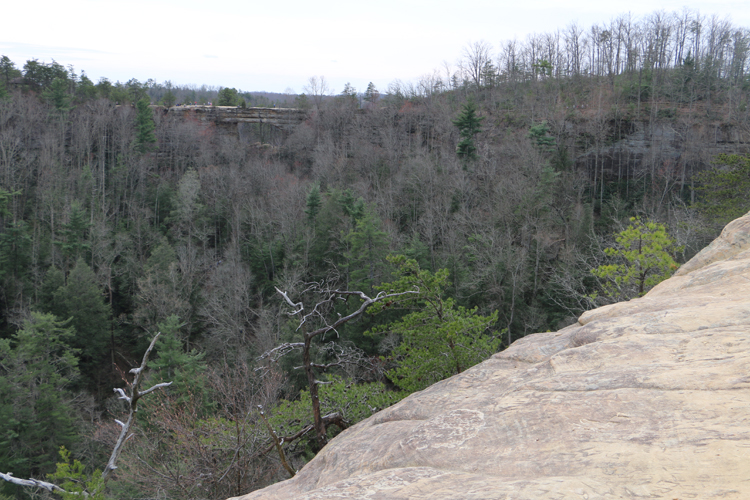
Zooming in on the “bridge” (which really to me seems to be an arch, given that it is fin-like astride a ridge, and not spanning any waterway):
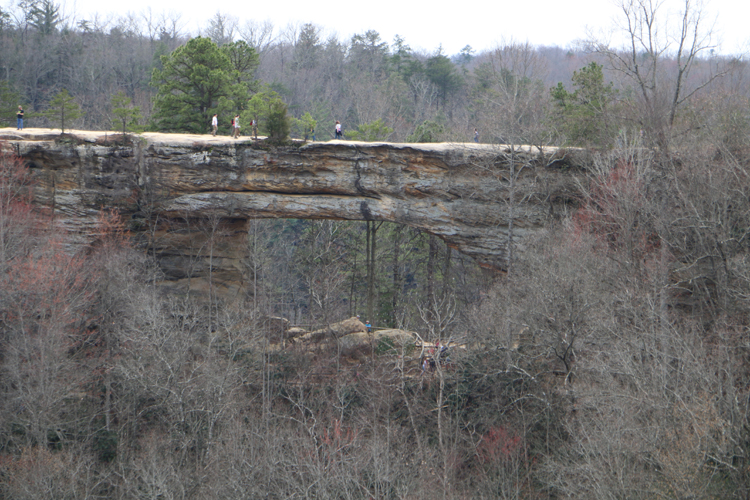
On the trail approaching the bridge from below:
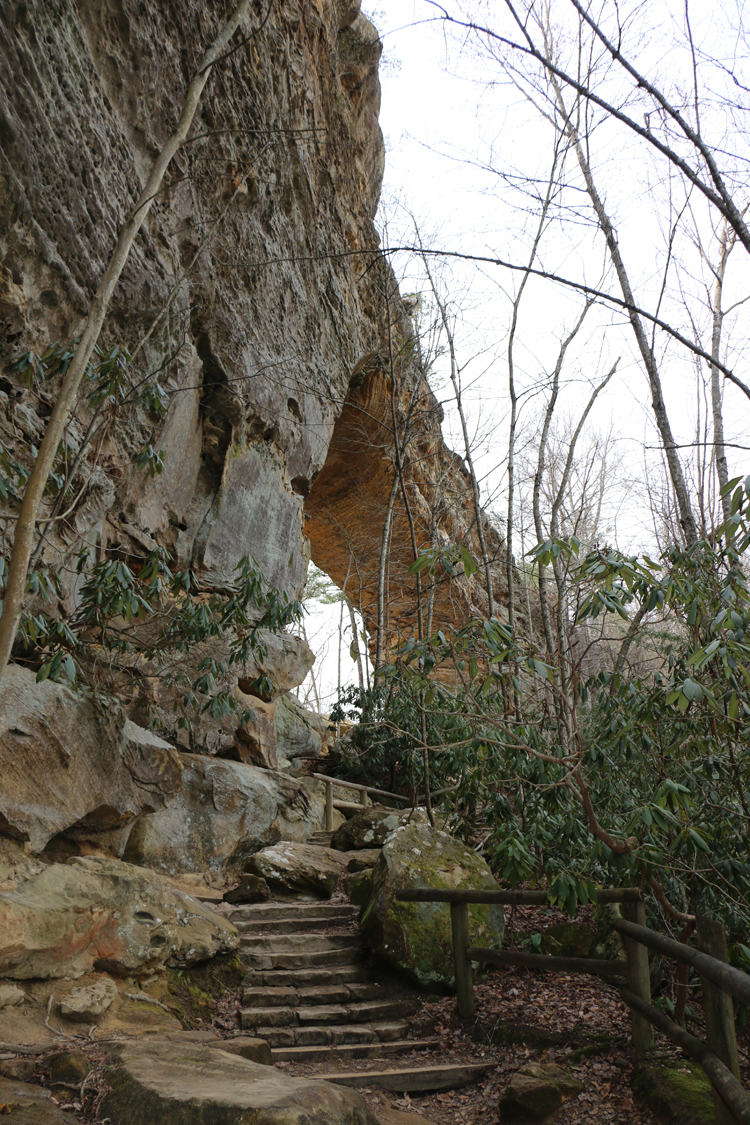
From underneath:
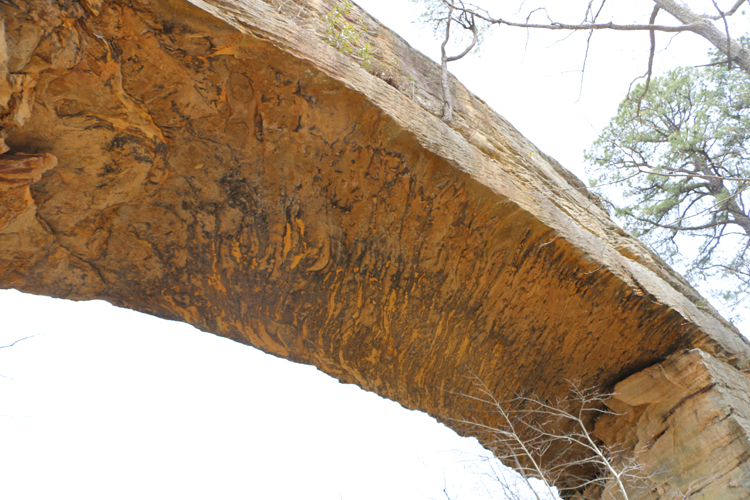
Joining me that day were my friends and colleagues Kent Ratajeski (my host; also at @KentRatajeski), Ryan Thigpen, Frank Tamakloe (a fellow alumnus of William & Mary), Stephanie Sparks (a former student of mine, also at @stsparks1). Here they all are, posing like the powerful posse they are, beneath the bridge:
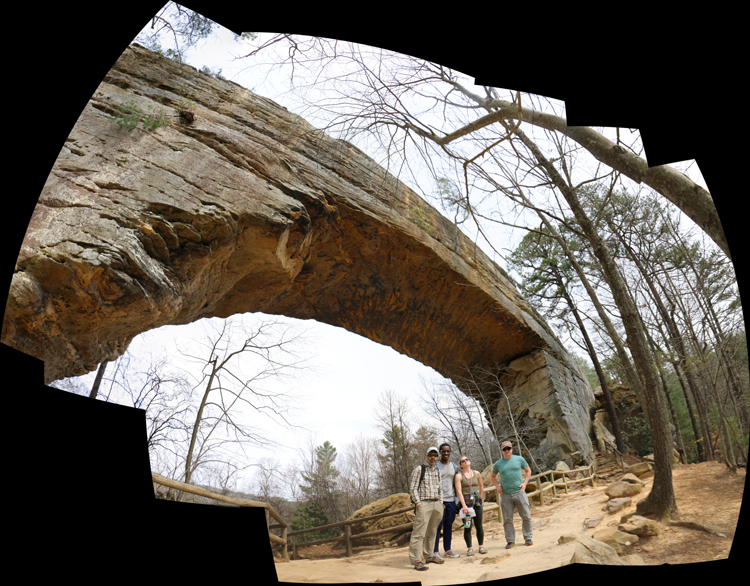
The rock here is sandstone of the Pennsylvanian aged Corbin Sandstone Member of the Lee Formation (Breathitt Group). It has nice cross-beds, and some decent woody plant fossils, like these:
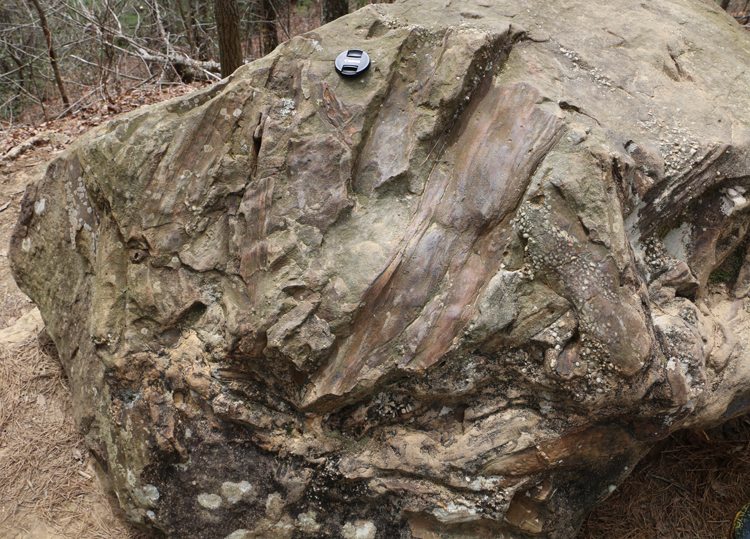
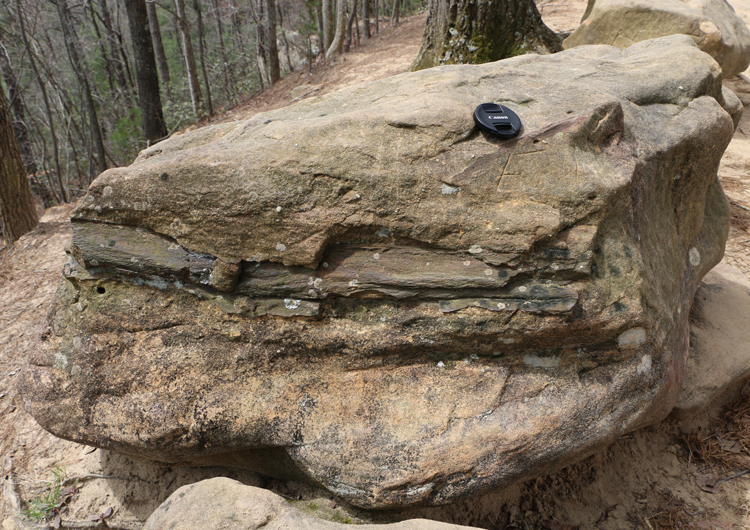
There’s also some terrific examples of tafoni, as Stephanie here demonstrates:
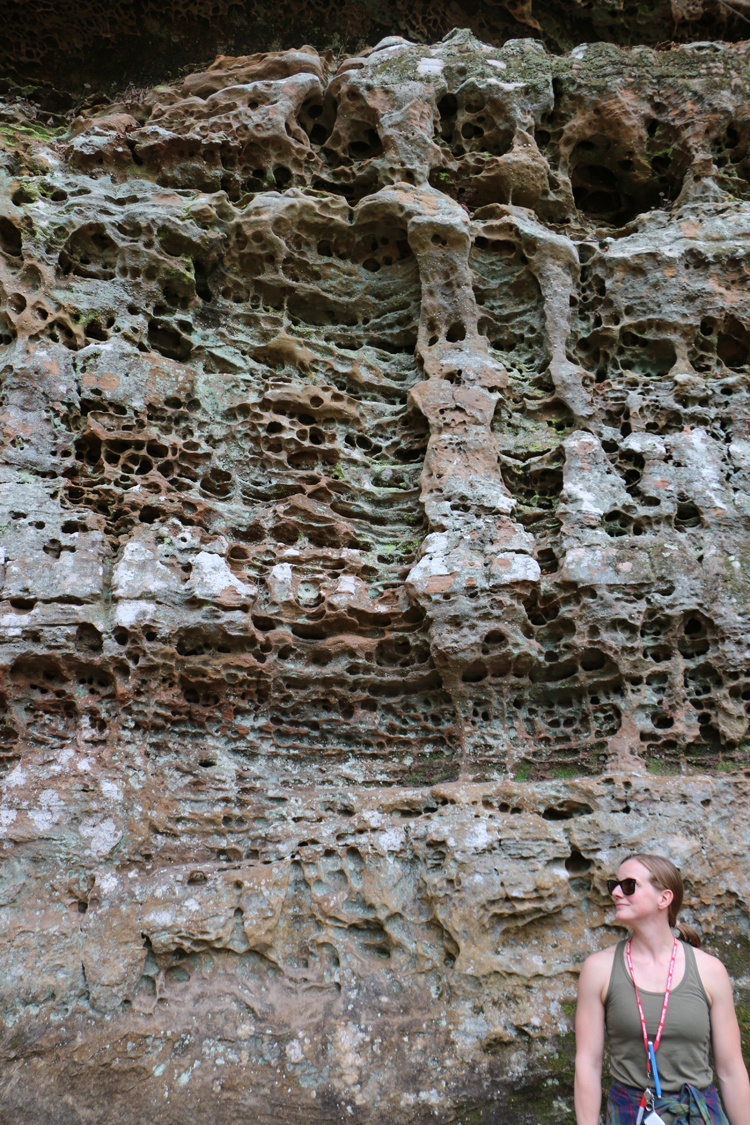
Here is a well-developed outcrop of tafoni on the underside of an overhanging ledge about 20 feet above me:
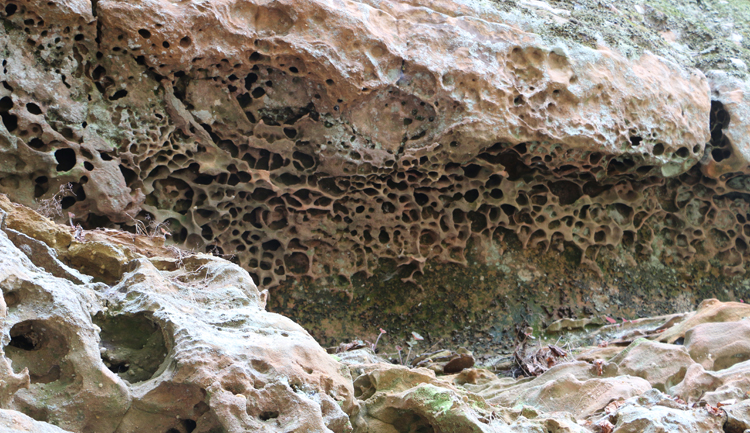
Frank and the tafoni wall (and the William & Mary t-shirt):
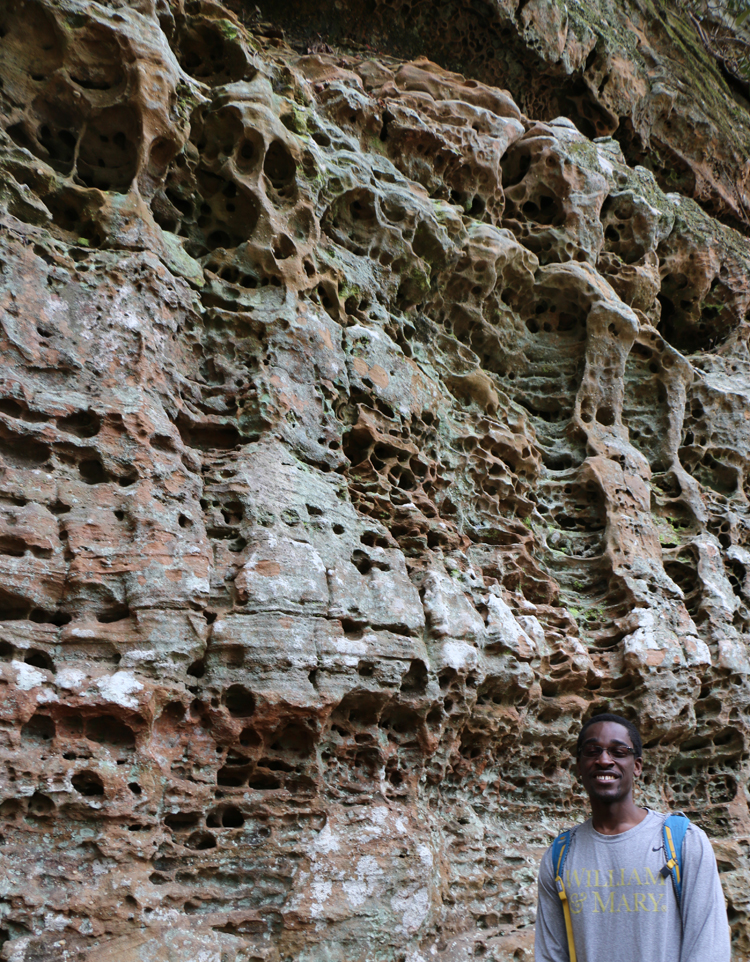
And then there was the Liesegang banding, which occurred in well-developed cylindrical shapes, and weathered out in three dimensions. It was lovely in its hues and varied forms. Take a gander:
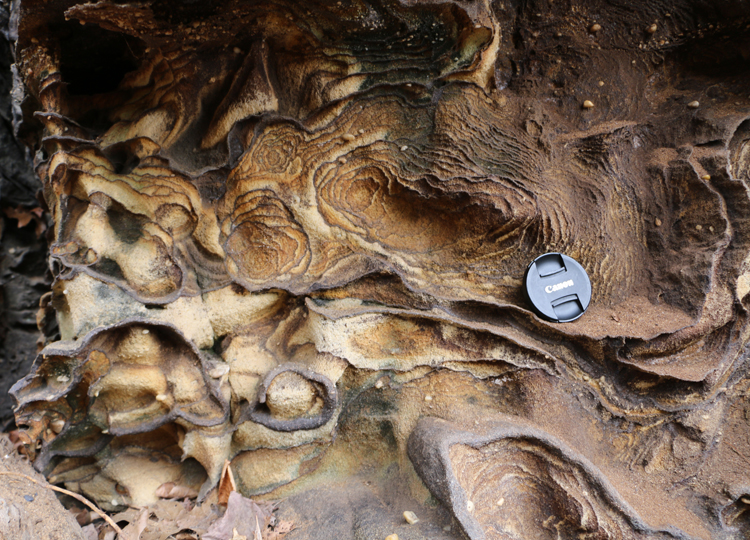
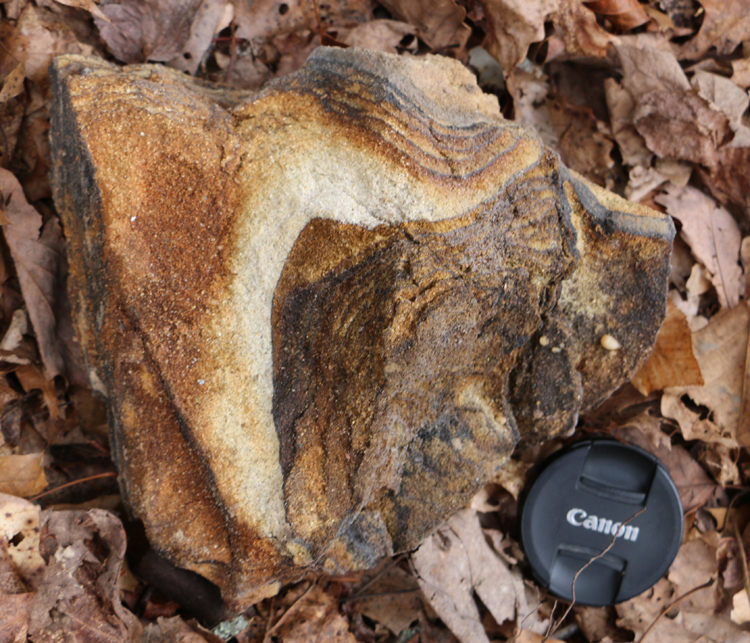
Here, flow of fluids through the permeable sandstone encouraged the transport of reactive consituents which deposited iron oxide minerals in concentric, waving bands. It’s a common feature to be seen in rocks like these, as I’ve noted previously on this blog.
The iron-oxide cementation accentuated the development of the tafoni, as you can see here:
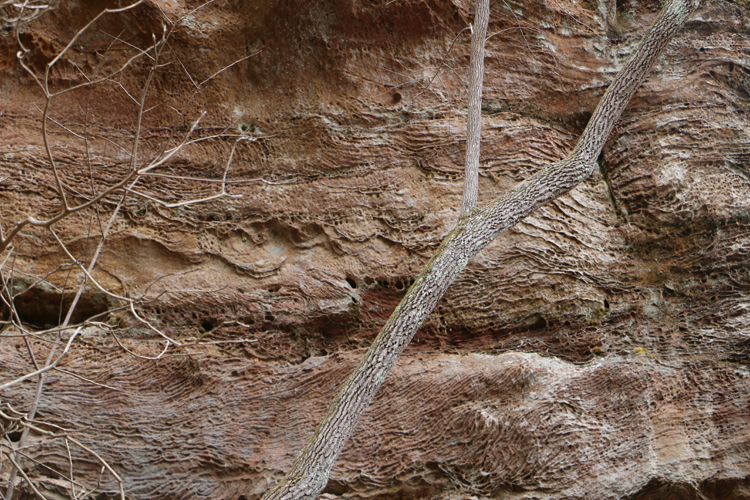
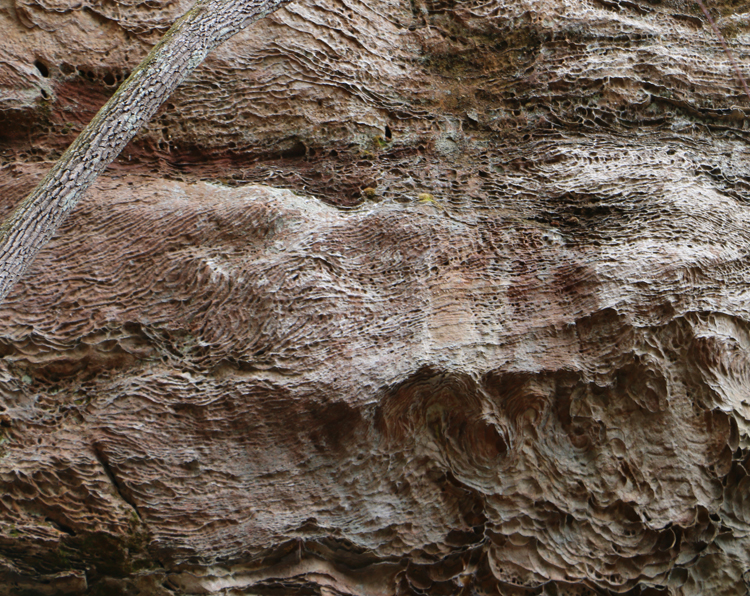
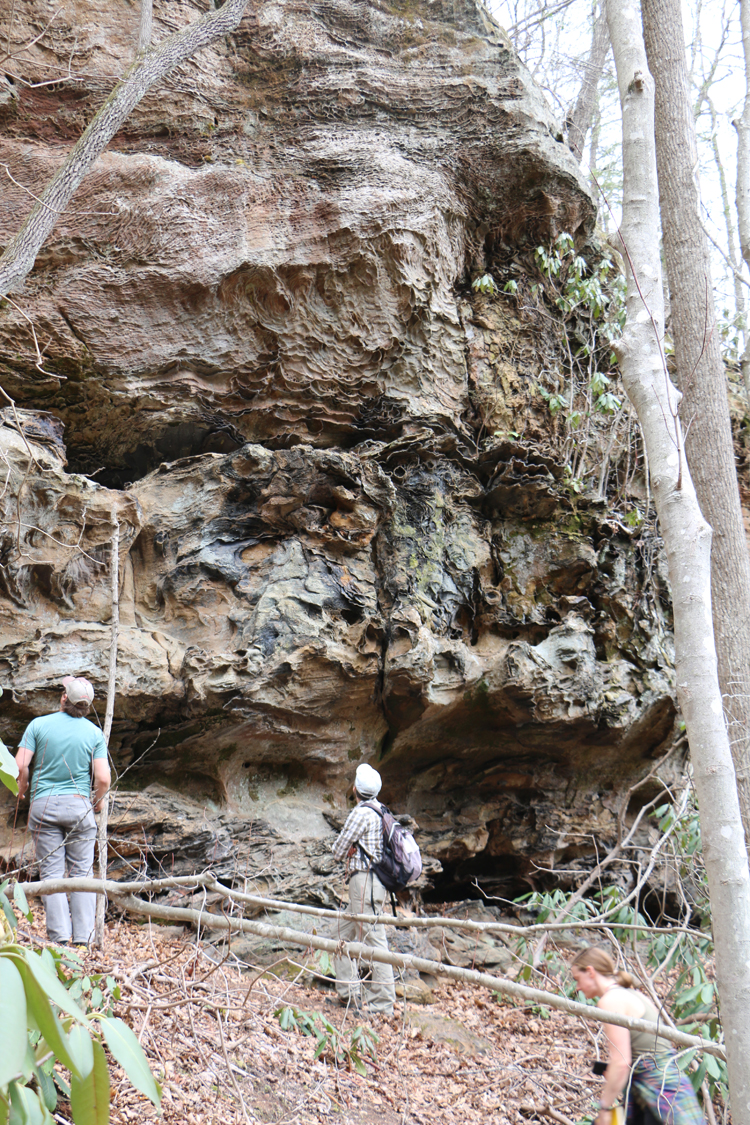
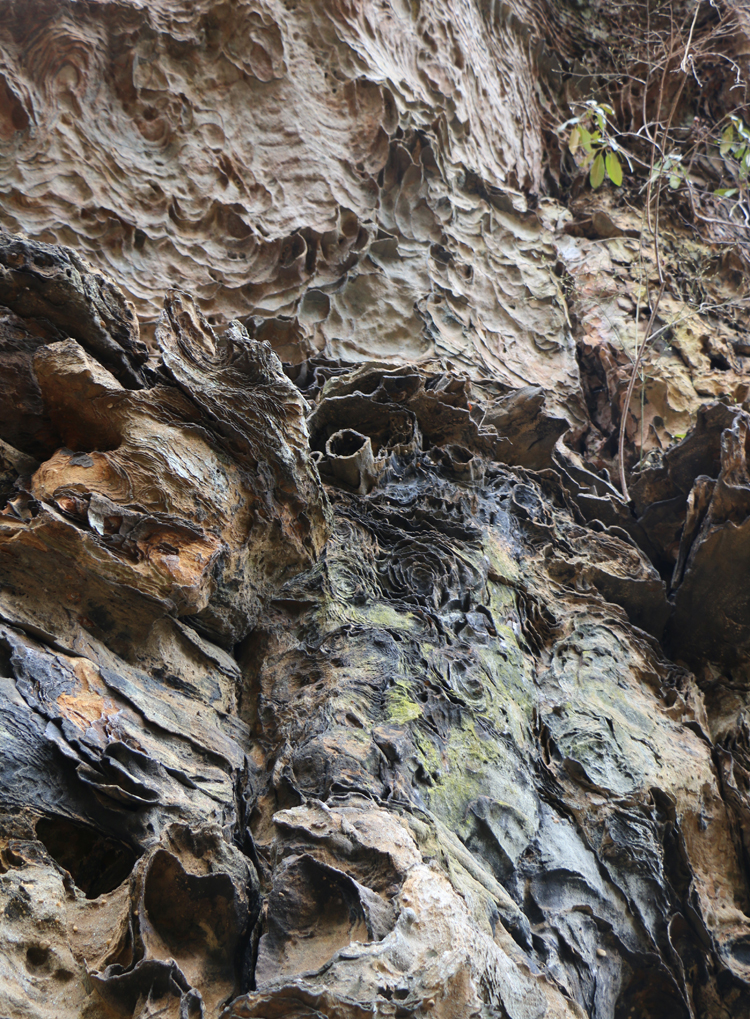

Zooming in on the “diapir-like” form on the left side of the previous image:
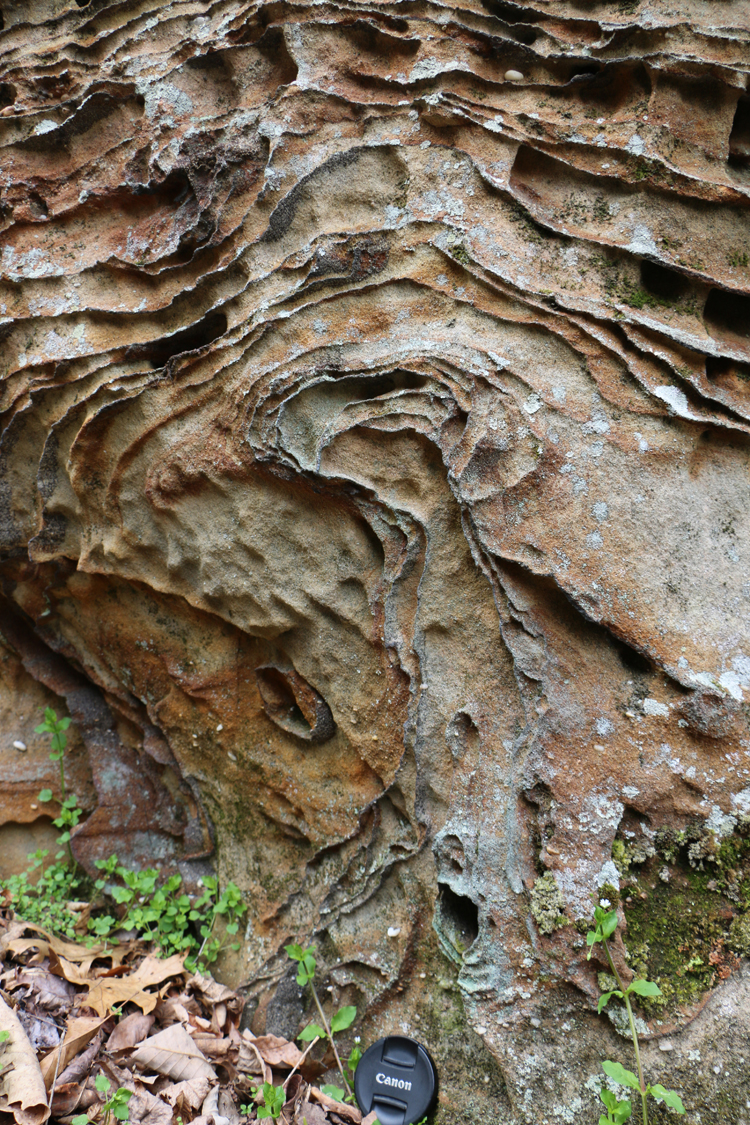
Visiting the park was a terrific experience, and I’d recommend it to anyone who finds themselves in the area. Overall, the Kentucky park reminded me a lot of Giant City, a park in neighboring Illinois, which is made of similar Pennsylvanian sandstone weathering out in near-identical conditions.


 Callan Bentley is Associate Professor of Geology at Piedmont Virginia Community College in Charlottesville, Virginia. He is a Fellow of the Geological Society of America. For his work on this blog, the National Association of Geoscience Teachers recognized him with the James Shea Award. He has also won the Outstanding Faculty Award from the State Council on Higher Education in Virginia, and the Biggs Award for Excellence in Geoscience Teaching from the Geoscience Education Division of the Geological Society of America. In previous years, Callan served as a contributing editor at EARTH magazine, President of the Geological Society of Washington and President the Geo2YC division of NAGT.
Callan Bentley is Associate Professor of Geology at Piedmont Virginia Community College in Charlottesville, Virginia. He is a Fellow of the Geological Society of America. For his work on this blog, the National Association of Geoscience Teachers recognized him with the James Shea Award. He has also won the Outstanding Faculty Award from the State Council on Higher Education in Virginia, and the Biggs Award for Excellence in Geoscience Teaching from the Geoscience Education Division of the Geological Society of America. In previous years, Callan served as a contributing editor at EARTH magazine, President of the Geological Society of Washington and President the Geo2YC division of NAGT.
Was it a bridge once ? Inside ridge of a river bend ?
Else how did such a formation develop ?
No, I don’t think so – it’s at the highest position in the local landscape, so I think it formed the way other arches form:
https://www.nps.gov/arch/learn/nature/arches.htm
I’ve been there several times over the course of about 50 years, and it’s a wonderful place. Thanks for the Geology lessons about a favorite place!